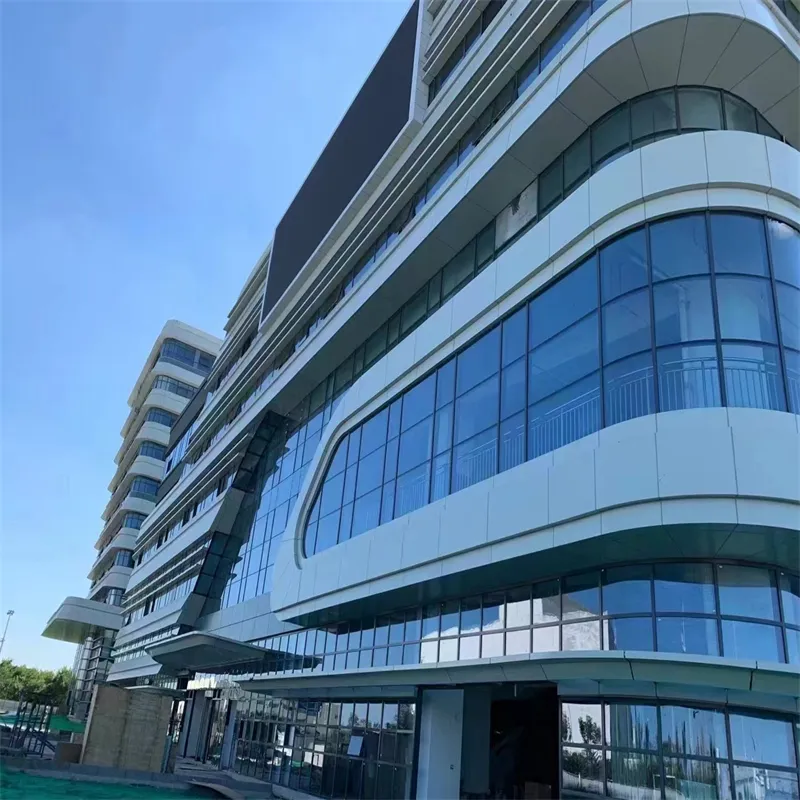Dec . 15, 2024 02:51 Back to list
Different Varieties and Applications of Tempered Glass for Various Uses
Understanding the Types of Tempered Glass
Tempered glass, also known as toughened glass, is a type of safety glass that has been processed by controlled thermal or chemical treatments to increase its strength compared to normal glass. This glass is designed to withstand high temperatures and sudden changes in temperature, making it an ideal choice for various applications in construction, automotive, and consumer products. This article will explore the different types of tempered glass, their manufacturing processes, and their unique applications.
The Manufacturing Process
The process of creating tempered glass involves heating it to approximately 600 degrees Celsius (about 1,112 degrees Fahrenheit) and then rapidly cooling it. This rapid cooling creates a balance between surface compression and core tension, which enhances the glass’s durability. There are primarily two methods of tempering thermal tempering and chemical tempering.
1. Thermal Tempering This is the most common method, where the glass is heated in a furnace and then cooled quickly in a controlled environment. Thermal tempering results in glass that can withstand impact and thermal stress, making it suitable for applications like shower doors, glass doors and tables, and car windows.
2. Chemical Tempering This involves immersing glass in a potassium salt bath for several hours. The process allows larger potassium ions to replace the smaller sodium ions in the glass surface, creating compressive stress that makes the glass more resistant to breaking. Chemical tempered glass is often thinner than thermally tempered glass and is commonly used in mobile devices and some types of architecture.
Types of Tempered Glass
Tempered glass comes in various forms, tailored to specific uses
. Each type brings its own set of characteristics and advantages1. Clear Tempered Glass This is the most basic form of tempered glass, widely used in residential and commercial applications. Its clarity allows for unobstructed views, making it ideal for windows and facades.
2. Tinted Tempered Glass Tinted glass is treated to reduce glare and control solar heat gain, making interiors more comfortable. Commonly used in office buildings and homes, it also offers privacy without sacrificing natural light.
types of tempered glass

3. Low-E (Low Emissivity) Tempered Glass This type has a special coating that reflects heat and keeps buildings energy-efficient. It is particularly popular for use in modern eco-friendly constructions, where temperature regulation is essential.
4. Laminated Tempered Glass This combines the strength of tempered glass with the safety of laminated glass. It consists of two or more layers of tempered glass bonded together with a layer of polyvinyl butyral (PVB). This type is used in applications where safety is paramount, such as skylights and glass railings.
5. Fire-Rated Tempered Glass Designed to withstand high temperatures, fire-rated tempered glass is used in settings where fire safety is a concern. It is often found in fire doors and windows, helping prevent the spread of fire and smoke.
6. Textured or Frosted Tempered Glass This glass is treated with a textured finish, which allows for privacy while maintaining light diffusion. It is commonly used in bathroom windows, shower enclosures, and office partitions.
Applications of Tempered Glass
The strength and versatility of tempered glass have made it a popular choice across various industries. In the automotive sector, tempered glass is used for side windows and rear windows, enhancing passenger safety and visibility. In architecture, it serves in facades, glass balconies, and curtain walls, providing sleek aesthetics along with durability.
The home improvement sector also utilizes tempered glass for shower doors, tabletops, and kitchen backsplashes. Its resistance to breakage reduces the risk of injury, making it a preferred choice for families.
Conclusion
Tempered glass is a remarkable material that has transformed the way we design and use glass in our everyday lives. With different types available to meet diverse needs, it combines strength, safety, and style. Whether in homes, businesses, or vehicles, tempered glass continues to be a vital component in creating safer and more aesthetically pleasing environments. Understanding the various types helps consumers make informed decisions about their applications, ensuring they choose the best option for their specific requirements.
-
Safety and Style with Premium Laminated Glass Solutions
NewsJun.24,2025
-
Reinvents Security with Premium Wired Glass
NewsJun.24,2025
-
Premium Float Glass Line for Modern Architecture
NewsJun.24,2025
-
Low Emissivity Glass for Energy-Efficient Architecture
NewsJun.24,2025
-
High-Performance Insulated Glass Solutions for Modern Architecture
NewsJun.24,2025
-
Elevates Interior Style with Premium Silver Mirror
NewsJun.24,2025
Related PRODUCTS














